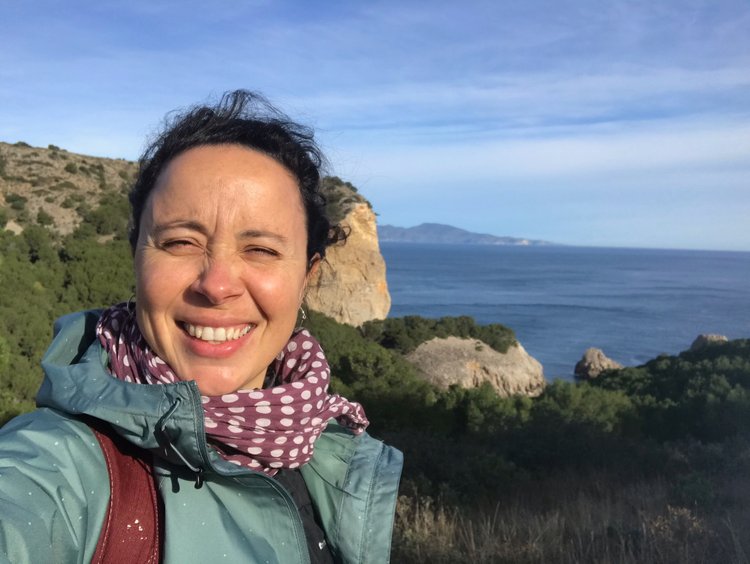Visiting Spain in January
Spain in January
Although January, together with February, is the coldest time of the year in Spain, there are still many wonderful things to do. Visiting at this time of year will also give you the advantage of exceedingly few other travelers and excellent prices.
Moreover, it’s really not that cold; temperatures only go below freezing in some parts of the Peninsula, and many southern cities enjoy lots of sunny days and rather pleasant weather. Don’t be put off!
Winter sports lovers will certainly enjoy the offer of great ski resorts, particularly in the Pyrenees up north and in the Sierra Nevada down south. Landscapes and little towns also look especially picturesque covered in snow, and typical mountain cuisine helps you to fight away the cold in a tasty way.
January is also the month after Christmas, and shopping in the most important cities of the country becomes a favorite activity, because you can take advantage of the big sales and steep discounts. You probably aren’t coming to Spain for the shopping, but I’d recommend leaving a little extra space in your suitcase just in case!
Shopping aside, it’s also a great time to dive into the cultural offerings of Spain’s largest cities as everything is open, but nowhere is crowded.
Finally, January offers many local events and festivals to enjoy, so you’ll never be bored!
More Spain travel info:
If you could use some one-on-one help planning your itinerary, schedule a Spain travel consultation with one of our Local Experts!
Local help with your planning
Choosing the right month for your visit is the first step in planning a Spain trip. Next, you have to decide where to go!
If you could use some one-on-one help figuring out your plan, consider scheduling a Spain travel consultation with one of our Local Experts!
These are one-hour Zoom calls where you’ll get to chat with a Spain-based travel pro about the trip you’re planning and they’ll share their tips and advice, answer your travel questions, and help you perfect your itinerary.
Weather
Obviously, if you are looking for beach lounging, water sports, or outdoors activities, January probably isn’t the right time to visit Spain. A possible exception would be for the Canary Islands, where temperatures are stable and pleasant all throughout the year.
Although it’s winter, in a large swath of the country temperatures remain quite mild and you can still comfortably get outside during the day, as long as you remember to pack a rain coat, waterproof shoes, and warm clothes.
On the whole, the weather in January is quite pleasant in Andalusia, with an average temperature of 55.4º F (13º C).
On the eastern coast of Spain (think Alicante, Valencia, and Barcelona) average daily temps are a similar 52º F (11º C).
Bilbao, in the Basque Country, has the same mild temperatures at midday, but with the downside of very wet conditions. The same mild, but rainy climate is in place all across the northern Atlantic coast of Spain, including in Asturias, Cantabria, and Galicia.
I won’t sugar coat it - January in northern Spain has the worst weather of the year. But hey, the region’s splendid lush green colors wouldn’t be there without at least a little rainfall!
Events
The three wise men parade in Alcoi (Valencia)
Epiphany Day, or the Three Wise Men, as it’s known in Spain, is a very important celebration that signals the end of Christmas, and it is heralded in every important city and town with a parade. The one in Alcoi, Valencia, is really special, as it’s lived with great excitement by old folks and children alike.
On the evening of January 5, the Three Wise Men make a spectacular entrance into Alcoi on camelback, carrying presents for the children. The faces of the little ones when they see them coming are simply unforgettable.
Fiesta of Sant Antoni Abad in Canals (Valencia)
The small town of Canals, in the eastern region of Valencia, celebrates its patron saint on January 17 with a giant bonfire. In fact, it’s so big that it has been listed in the Guinness Book of World Records as the world’s largest one.
The three wise men mystery play (Navarre)
Every year, the town of Sangüesa, in Navarre (northern Spain), holds a re-creation of the holy story of the Three Wise Men. The streets of Sangüesa become the setting for the re-enactment of the meeting with Herod and the announcement of his intentions by the angel. The celebration ends with a moving mass presided over by the Three Wise Men in the Church of Santiago.
Els tres tombs in Igualada (Catalonia)
“Tres tombs” means literally three laps in Catalan, and it’s the name of this old celebration because old carriages representing ancient guilds take three laps in the center of this Catalan town for good luck.
The parade ends with a blessing given to all the pets and farm animals present, as Saint Anthony is considered to be the patron saint of animals. Many animals are adorned with colorful ribbons or dressed up as they wait in line to receive their blessing: dogs, horses, cows, cats, lizards, and even snakes are equally welcome.
La tamborrada in San Sebastián (Basque Country)
The “tamborrada” or tambourine playing, on January 20, marks the beginning of the Fiesta Mayor otherwise known as the San Sebastián Fair.
More than 125 bands of tambourine players in typical costumes go down the main avenues of the beautiful Basque city, so be prepared for a lot of noise in this impressive parade that has been named a Festival of National Tourist Interest.

Where to visit in January
The great variability of weather in Spain is also present in January, of course, but in general temperatures are at their lowest point of the year.
The only place to have pleasant, warm weather is in the Canaries, because they are close to Africa and have privileged temperatures all throughout the year. It’s for that reason that they are referred to as the “Lucky Islands”, and many people from the Peninsula fly there when they want to escape from winter’s dreary conditions.
In spite of this, Spain’s winter weather is not extreme and in most of the Peninsula you can take advantage of the fact that there are almost no tourists around and everything is available at major discounts.
Ávila
Part of UNESCO World Heritage Sites, this Castilian city has the best-preserved Medieval Walls in Spain and seeing them completely justifies the visit. However, the Castilian town has much more than that: beautiful natural surroundings, interesting architecture and typical tasty cuisine. It’s also a cold city in winter, so you can’t forget your accessories or you may regret it!
Read more about Ávila here.
Segovia
Not far from Ávila and Madrid, another UNESCO World Heritage Site is the magnificent Segovia. Combining Medieval grandeur with the impressive and unique Roman aqueduct, charming streets in the old town and great gastronomy, Segovia is a must-visit that in winter will be less crowded than in high season.
Cordoba
This southern gem has the stunning Mezquita (mosque), one of the most impressive religious buildings that you can see in the word, and a well-preserved heritage to make it a UNESCO World Heritage Site. The weather in summer is unbearably hot, so the visit in winter is certainly much more recommended.
Lanzarote
Why not forget that you are in winter and take a trip to the Canary Islands? The eight of them are worth visiting, but Lanzarote, with its average temperature of 68º F (20º C), offers you the best way to scape from the chilly weather in the Peninsula: great landscapes, some of the best beaches in Spain and pleasant temperatures.
Granada
The Alhambra is probably the most impressive example of the beauty of Moorish architecture, but the southern city of Granada has many other interesting landmarks. Seeing the town dusted with snow at sunset is one of the unforgettable moments that you may enjoy there in January, but you may also enjoy great cuisine and unforgettable flamenco shows in one of the caves of Sacromonte, a traditional neighborhood in the eastern area of the city.
What to do in January
Discover mountain towns
The list of picturesque, charming little Spanish towns that you can visit in the Pyrenees or in Sierra Nevada, in the south, is really long. It’s an ideal destination to go with children and enjoy playing with snow, hiking and enchanting landscapes.
Watch the Three Wise Men parade in Barcelona
Although there are Three Wise Men parades throughout Spain, in Barcelona these important figures arrive by boat, and they have a big court made of dancers, pages and musicians. Little children bring their pacifiers and give them to the royal pages with bright eyes of emotion, while they wait for candy to fall in their hands.
Fight the cold with a cocido in Madrid
Cocido madrileño is a traditional chick-pea stew prepared with various meats and vegetables. It’s a substantial dish and for this reason it’s very popular in winter. After savoring the three servings that make this stew, you may need a siesta before going on with the visit.
Make the most of January sales
If you enjoy shopping, you must know that the sales period in Spain takes place in January. They usually start on the seventh, but big cities like Madrid and Barcelona may bring them forward to the first day of the year.
Practice snowshoeing in Aigüestortes, Catalan Pyrenees
If you have eaten too much in Christmas, you may be looking for a funny way to do sport and burn up the extra calories. Snowshoeing is a perfect winter activity for all hiking enthusiasts, as it combines the physical activity with the beauty of the landscape.
In the Natural Park of Aiguestortes, in the heart of the Catalan Pyrenees, the trail for beginners reaches the Llong Lake surrounded by beautiful snowy mountains. All the family will enjoy this way of discovering the country and practicing sport.



Alfonso Nuñez
Spain Expert based in San Sebastián
¡Hola y buenos días! 👋
Hi, I'm Alfonso, and I've been a tour guide and travel consultant here in Spain for the last 18 years. If you're looking for some local advice on your trip, I'd love to help!
Learn more Book a consultation
Connect with a Spain expert!











